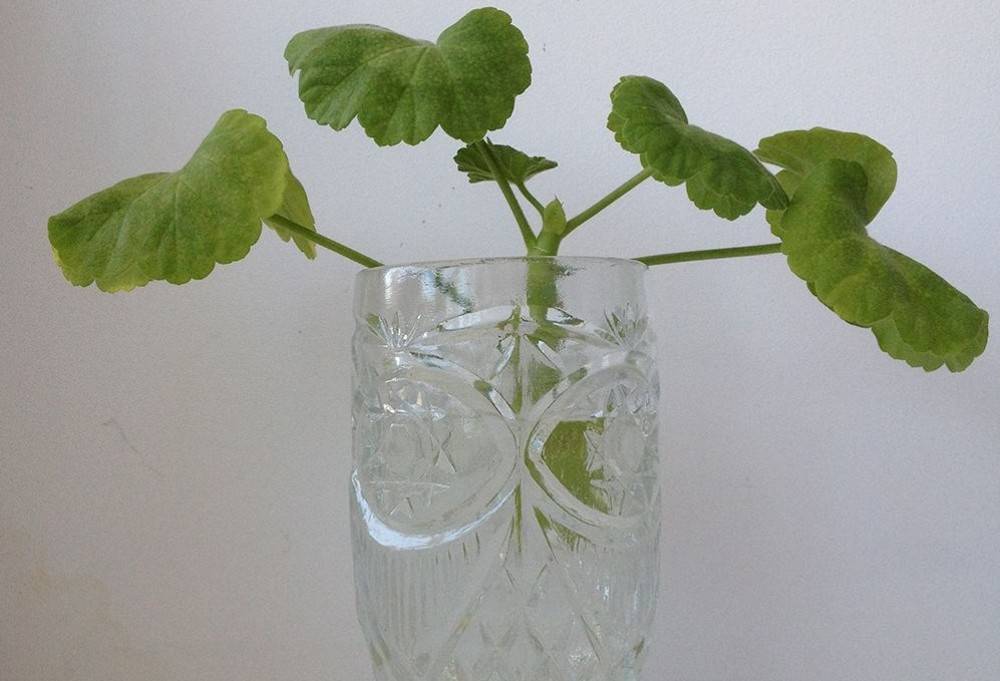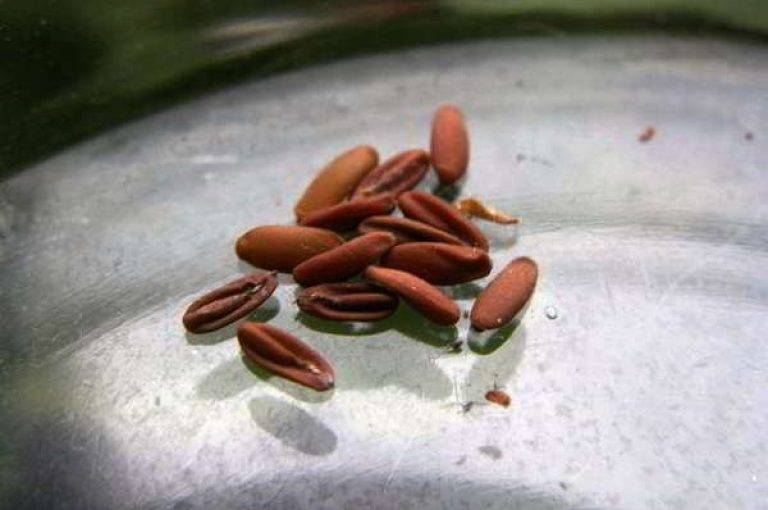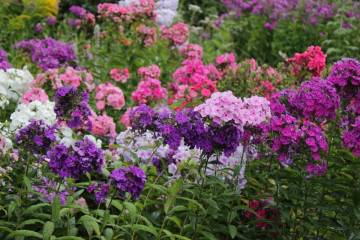Reproduction of geraniums at home, when to plant, so that it blooms in summer
Content:
Geranium (lat. Geranium, other names - crane or pelargonium) belongs to the genus of the Geraniev family. It is presented most often in the form of a perennial herb or shrub. Differs in unpretentiousness and beautiful and bright flowering. Plants like these will easily decorate any windowsill or garden area. Of course, in a specialized department you can purchase an already flowering plant, but it is more interesting to grow it yourself from the shoot of a neighbor's flower. Therefore, many growers are faced with the question of how geraniums multiply, and which method is better to choose for this.
When does geranium multiply
The vegetative method of reproduction of the Geraniev family is considered to be equally successful at any time of the year. Still, gardeners recommend taking into account the natural life cycle of a flower, the cuttings of which root better in the spring months. This does not mean that the planted geranium will not be accepted at another time, just rooting will take a longer period of time.
Reproduction methods
The breeding method depends only on personal preference and the experience of the gardener. At the moment, there are methods of grafting, rooting a leaf, dividing an adult bush or sowing seeds.
How to plant geraniums with a shoot without roots
Rooting cuttings in the ground is one of the most popular methods of vegetative propagation of geraniums at home. This method allows you to get high-quality planting material.
It is recommended to harvest cuttings in the spring, since it is during this period that they quickly take root. Usually this procedure is carried out during the spring pruning of flowers for the growing moon. Among the cut branches, those that look the strongest and healthiest are selected. Further, these branches are cut at an angle of 90 ° with a length of about 10-15 cm, the cuts are made between two leaves. The bottom cut is cut below the bud so as not to leave a stem that can rot. The upper cut is above the bud, so that the new shoot grows upward, and not to the side. All lower leaves are removed, leaving 3-4 leaves at the top.
At this time, the container and the soil are prepared for rooting. A drainage layer is poured into a container of the required size (container, pot, cups for seedlings, etc.) with holes at the bottom. Geranium loves light and loose soil. Therefore, the soil mixture is kneaded from peat, garden soil, humus in 2 parts and powder from charcoal, fine sand in 1 part. Soil for geraniums is poured into a container and watered thoroughly, excess moisture will seep into the pan and pour out. Next, you need to take the seedlings, place them in the hole and press lightly at the bottom of the trunk with earth.
The optimum temperature for rooting is 18-25 ° C without direct sunlight on the cuttings. Shoot care consists in watering when the earthen coma dries and spraying in the presence of dry air.
As soon as the first young leaves appeared on the shoot, the rooting process was completed. This usually happens within 3-7 weeks depending on the geranium variety. To strengthen the rooted planting material, it is left in the same conditions for another month, after which the cuttings are planted in the ground, pots, boxes on the veranda or balcony.
How to cut geraniums in water
You can also root cuttings in water. They are prepared in the same way as when planting in the soil. Settled water is poured into a darkened glass container with the addition of activated carbon powder, which will prevent the appearance and development of pathogenic microflora. The cutting leaves remain above the water, which in turn changes once or twice a week. The container with the handle is placed in a warm, bright place without direct sunlight. After the roots reach a length of 30 mm, the shoot can be planted in a prepared pot.
Usually, the propagation of geraniums by cuttings at home is carried out without any preparation, but to increase the chances of settling down, you can take the following steps:
- after cutting, the seedlings are laid out on a flat surface in a warm darkened room for drying for 2-3 hours;
- dried sections can be treated not only with activated charcoal, but also additionally with a drug that stimulates root formation, for example, root.
When can you graft and why
The optimal time for cuttings of geraniums is the end of winter, early spring or autumn. The later the dates, the higher the likelihood of geranium flowering only next year. It is recommended to cut pelargonium in the second half of February to early April, it is during this period that the bush is actively producing juices. Plants propagated at this time will bloom by the end of summer.
In winter, plants enter a dormant period when all metabolic processes slow down. Therefore, shoots cut in late autumn take root worse, since their roots take longer to germinate, which can cause the seedling to rot.
How to propagate geraniums by rooting a leaf
Pelargonium has no nodes inside the leaves that can form roots. Therefore, a leaf placed in water will simply rot. You can get an escape if the leaf is cut from the mother bush together with the petiole and part of the stem. The resulting seedling should consist of at least two nodes, one of which will go to the formation of roots, and the second - the future inflorescence. The soil mixture is the same as for cuttings, poured onto the drainage layer in a glass and well moistened, and then the seedling is buried. The survival rate of such an shoot is much lower than cuttings.
How to grow geraniums from seeds
Geranium seeds resemble coffee beans in shape and structure: convex on one side and flat with a pronounced line of cotyledons on the other. Pelargonium seeds are usually deep brown in color. On the bush, when ripe, the seed box also becomes brown, the seeds in it are surrounded by a dense downy shell with an umbrella. After full maturation, the capsule bursts, and fruits grow in its place.
You can buy seeds in a specialized department or collect them from inflorescences at home. To do this, you will need to artificially pollinate indoor flowers with tweezers or a thin knitting needle. Pollen is carefully removed from the stamen of one inflorescence with tweezers and transferred to the stigma of the neighboring pistil, which blossomed 2-3 days before pollination. The number of repetitions of such a procedure is unlimited.
After a few days, the column will begin to grow and lengthen, forming into a pointed seed capsule. Once the boll is ripe and cracked, the seeds can be harvested and bred.
Pelargonium from seeds: when to plant so that it blooms in summer
The optimal time for seed sowing of pelargonium is February, March. Plants planted during this period bloom after 5-6 months. Seeds planted in late summer or autumn will require additional care in the form of artificial lighting and controlled humidity levels, and the plant will bloom only 9-11 months after sowing.
Large seeds of pelargonium are easy to plant; light, loose soil with a minimum of nutrients in the composition is suitable for them. Usually the soil is mixed from two parts of garden land and one part of peat and sand. In very poor soil, it is recommended to add a little humus. Before sowing seeds, the soil must be disinfected (calcined, steamed, filled with a disinfectant solution or boiling water with potassium permanganate).
Seeds are laid out in the moistened soil at a distance of 2 cm from each other, covered with a thin layer of soil on top and lightly sprayed with warm water. Some gardeners recommend stratifying the seeds on the bottom shelf of the refrigerator before growing. For faster pecking of seedlings, the container with crops is covered with cling film to create a greenhouse effect.
For successful seed growth, it is necessary to maintain a light moisture content of the soil mixture, preventing it from drying out. Before the first shoots appear, the container with the seedlings is in a warm, illuminated place without direct sunlight. After a friendly pecking of the seeds, the film is removed, and the pot is placed on the windowsill in the house, allowing young plants to bask in the light.
A rare guest in pots on windowsills, unlike other representatives of the Geranievs, is tulip geranium. A characteristic feature of this variety is small, tightly collected inflorescences that never open and look like buds.
For this similarity of petals to tulips, representatives of this variety got their name. The most popular varieties among gardeners are considered to be Happy Birthday pelargonium, Marie-Louise, Patricia Andrea, Pink Pandora, etc.
Step-by-step instructions on how to divide geranium roots
This is the easiest way to breed a crane, but it should be borne in mind that a large amount of seed will not come out.
- Geranium, along with the roots, are carefully removed from the pot or soil.
- The earthen ball is slightly shaken off so that the places of separation of the shoots are visible.
- Only shoots with roots are separated using a sharp knife treated with a disinfectant solution.
- The sections are treated with an antiseptic or disinfectant solution.
- Plants separated by roots are planted in prepared pots or open ground.
Possible Geranium Breeding Problems
During breeding, growers may face some difficulties.
- Geranium seedlings may not take root if the buds and flower arrows are not completely removed. The plant will direct all its forces to flowering, which simply will not be enough for rooting.
- Neglecting the processing of garden cutting tools can lead to the transfer of pathogenic microflora and existing diseases from patients to a new healthy plant. Failure to treat the cut with activated carbon of cuttings or an antiseptic of separated roots can lead to similar consequences.
- Excessive moisture at the base of a seedling that has not yet rooted will lead to the development of putrefactive processes and the death of the shoot.
A preliminary study of information about plants of the Geranium family and proper care will allow you to get a lot of these bright colors on a windowsill or garden flower bed. The main thing is to follow the rules described above, and then everything will definitely work out.
























